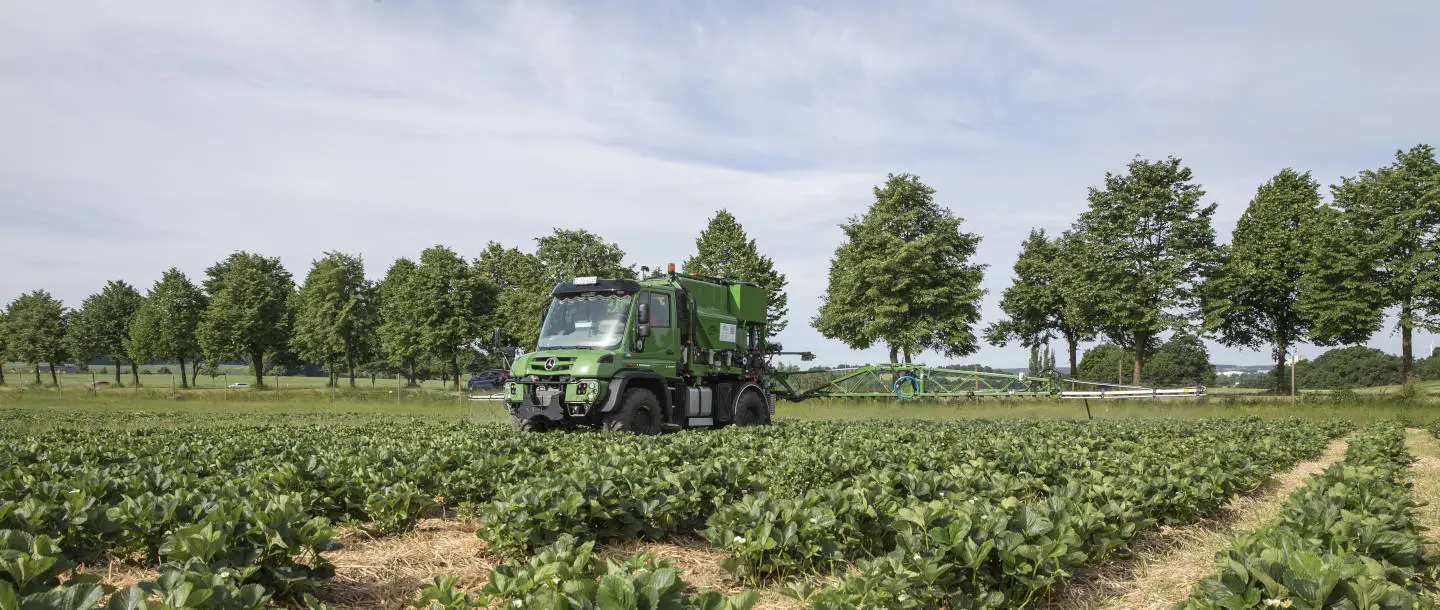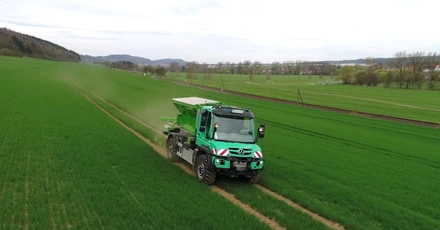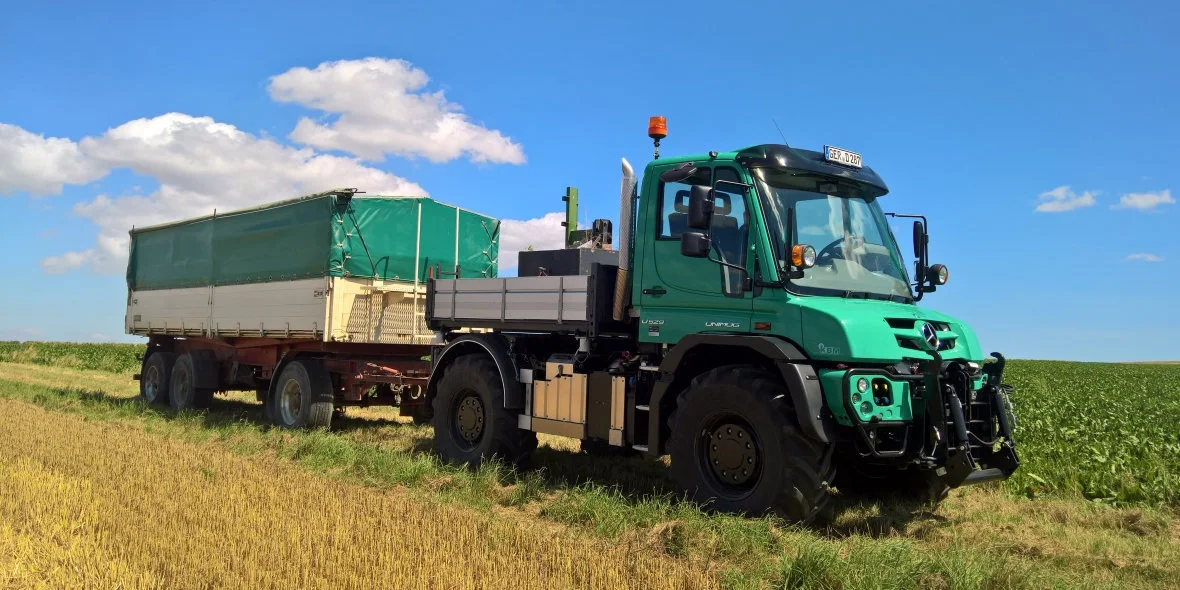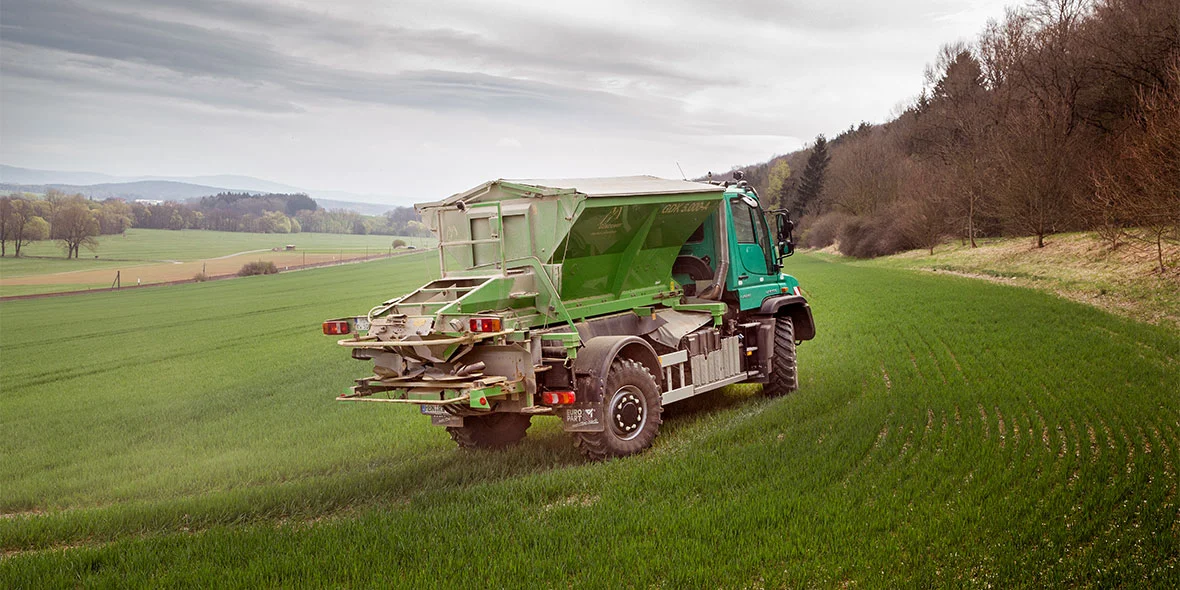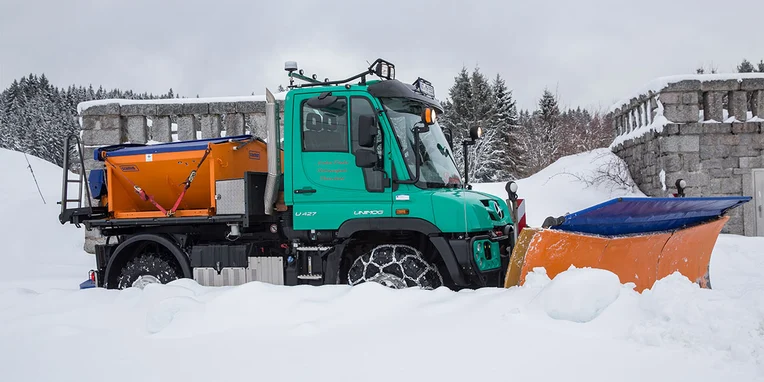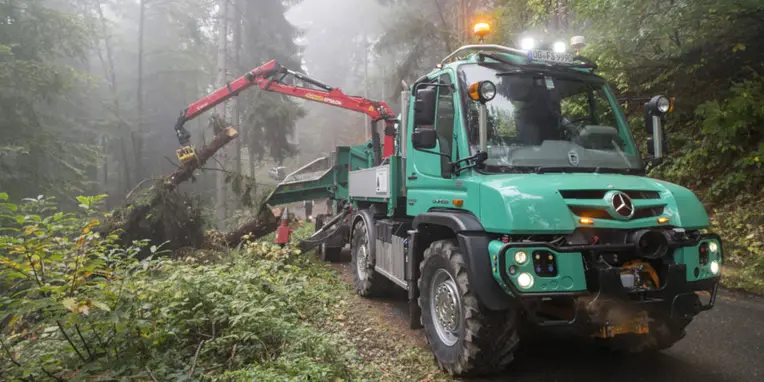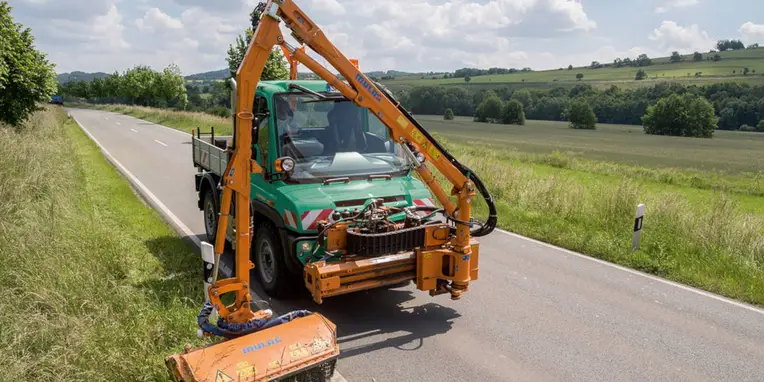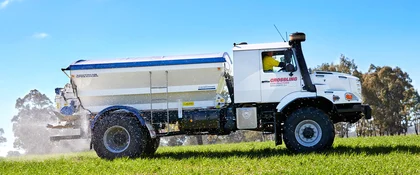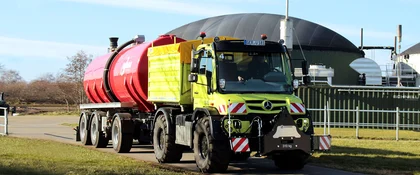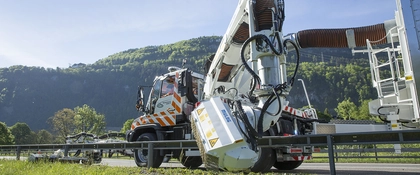Flexible in agriculture. From sowing seeds to transportation.
Producing hay alone requires four individual work steps: mowing, turning, swathing and finally pressing the hay bales. Equipped with suitable bodies and attachments, the Unimog is the perfect helper for each of these tasks.
An agricultural professional: the Unimog is flexible, safe and efficient
And that applies for many other agricultural operations. Whether it is used for soil cultivation and plant protection, for sowing seeds or fertilising, liming or silage transportation – thanks to its interfaces as well as the front and rear power lifts, the Unimog can be put to use quickly and without complication in a lot of field works.
As the pressure of growing costs and larger working surfaces increases, speed and smooth workflows become the most important aspects of transportation – and not just in the fields. As it travels between the fields and the unloading location, the Unimog skilfully plays out its strengths, providing for a higher degree of profitability:
- Payload: the greater the payload possible, the fewer the number of journeys required. The approximately 25 t payload of the Unimog is therefore a particularly significant argument for farmers.
- Transport speed: with up to 300 hp, the Unimog can reach almost 90 km/h even with a load. As a result, it can also be used as a means of transport on the motorway.
- EU tractor certification: the Unimog is eligible for an EU tractor certification. This is beneficial to the owner in many ways; for example the vehicle is exempt from tolls and can be operated on Sundays and public holidays.
- Low fuel consumption: despite its high performance, the Unimog U 530 offers in transport tasks a consumption advantage of up to 23% fuel compared to tractors of the same power class. This is the result of a survey carried out by the testing centre of the German Agricultural Society (DLG).
The Unimog is kind to the ground and crops.
The Unimog doesn't just make for efficient processes in transport tasks, but also when used in the fields. The decisive factors here are two technical finesses ex factory which conserve both the ground and the crops, thus increasing yields.
A large problem caused by agricultural vehicles is the damage to crops that they leave behind. Each time a plant is squashed by the rear wheels and destroyed, the yield is reduced. The steering rear axle on the Unimog avoids this damage. The rear wheels remain in the tracks created by the front tyres. Thus protecting the crop to the best possible degree.
At the same time the central tyre inflation system ensures that the ground is interfered with as little as possible. Before the Unimog rolls onto the field, the driver can reduce the tyre pressure by simply pressing a button directly on the steering wheel. The weight of the vehicle is thus optimally distributed across the surface, preventing the tyres from sinking in. Back on the road, the driver changes the tyre mode back to asphalt which reduces consumption and improves road-holding.
The farmer about town. Helping out municipalities.
The Unimog remains useful, even after the harvest is done. Agricultural contractors and service providers can then take on municipal tasks and thus secure a lucrative input source.
